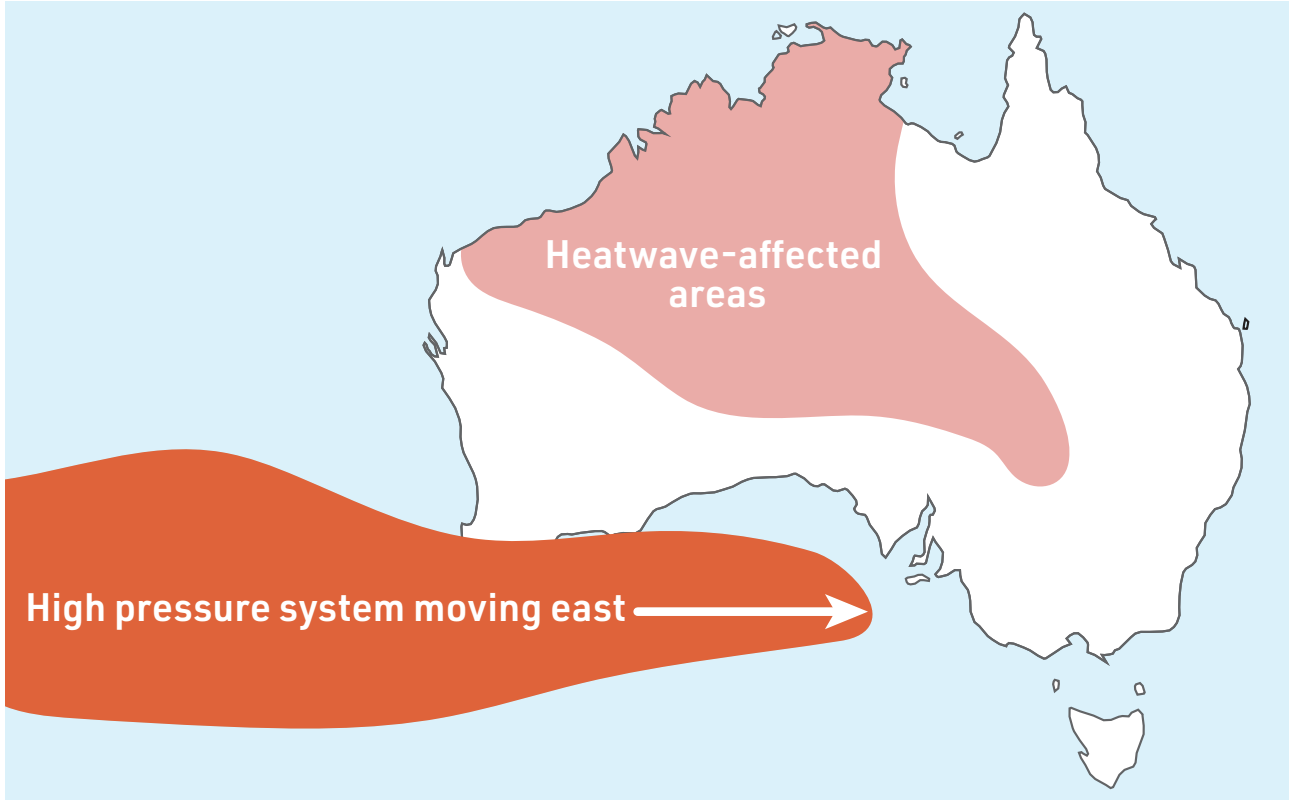- Western Australia experienced a series of heatwaves in December 2021 – January 2022.
- The coastal town of Onslow, Western Australia, equalled Australia’s hottest day at 50.7°C.

Western Australia experienced a series of heatwaves over the 2021-2022 summer period, starting on 17th December and 12th January, and in the south-west, starting on 23rd December and 18th January of the Pilbara region.
These led to several records, including the equal hottest day in Australia of 50.7°C, at Onslow on 13th January, and Perth recording six days in a row above 40°C between 18th and 23rd January – the longest run of such days for any month in 123 years of observations.
This marked Perth’s 11th day over 40°C for the 2021-22 summer and exceeded the previous record of 7 summer days over 40°C, set in the 2015-16 summer. For Marble Bar, a total of 16 days of maximum temperatures above 45°C in December is the highest count for that month on record, and the second highest for any month.
During this heatwave, a strong high-pressure system over the Great Australian Bight created easterly winds that brought hot and dry weather from the desert to Perth. Additionally, a west coast trough – an extended region of low atmospheric pressure – was situated either just along the west coast, or slightly offshore.
The combination of the high over the Bight and the coastal trough resulted in easterly to north easterly winds, which acted to block the afternoon sea breeze, causing it to weaken and form later, allowing heat to build up over the land for most of the day.

Heatwaves are one of the most significant natural hazards in Australia in terms of loss of life. They can negatively impact infrastructure, agriculture, ecosystems as well as health.
Heatwave conditions are expected to continue to worsen as the climate warms. The ARC Centre of Excellence for Climate Extremes is continuing to research links between heatwaves and weather systems, soil moisture and climate change.
Main research contact: Dr Tess Parker | Tess.Parker@monash.edu
The State of Weather and Climate Extremes 2022
Weather and climate extremes in Antarctica
Extreme events in 2022
Heatwaves in Western Australia
Extreme rainfall and flooding in Queensland and New South Wales February-March 2022
Record low Antarctic sea ice extent in 2022
Simultaneous Antarctic and Arctic heatwaves
Collapse of East Antarctic Conger ice shelf
Hailstorms in Queensland, Victoria and New South Wales
Damaging wind gusts in South Australia and the Northern Territory
© 2023 ARC Centre of Excellence for Climate Extremes
References and acknowledgements available in the PDF version available here.
Materials used are for educational purposes and either author provided or used under fair dealing provisions.
